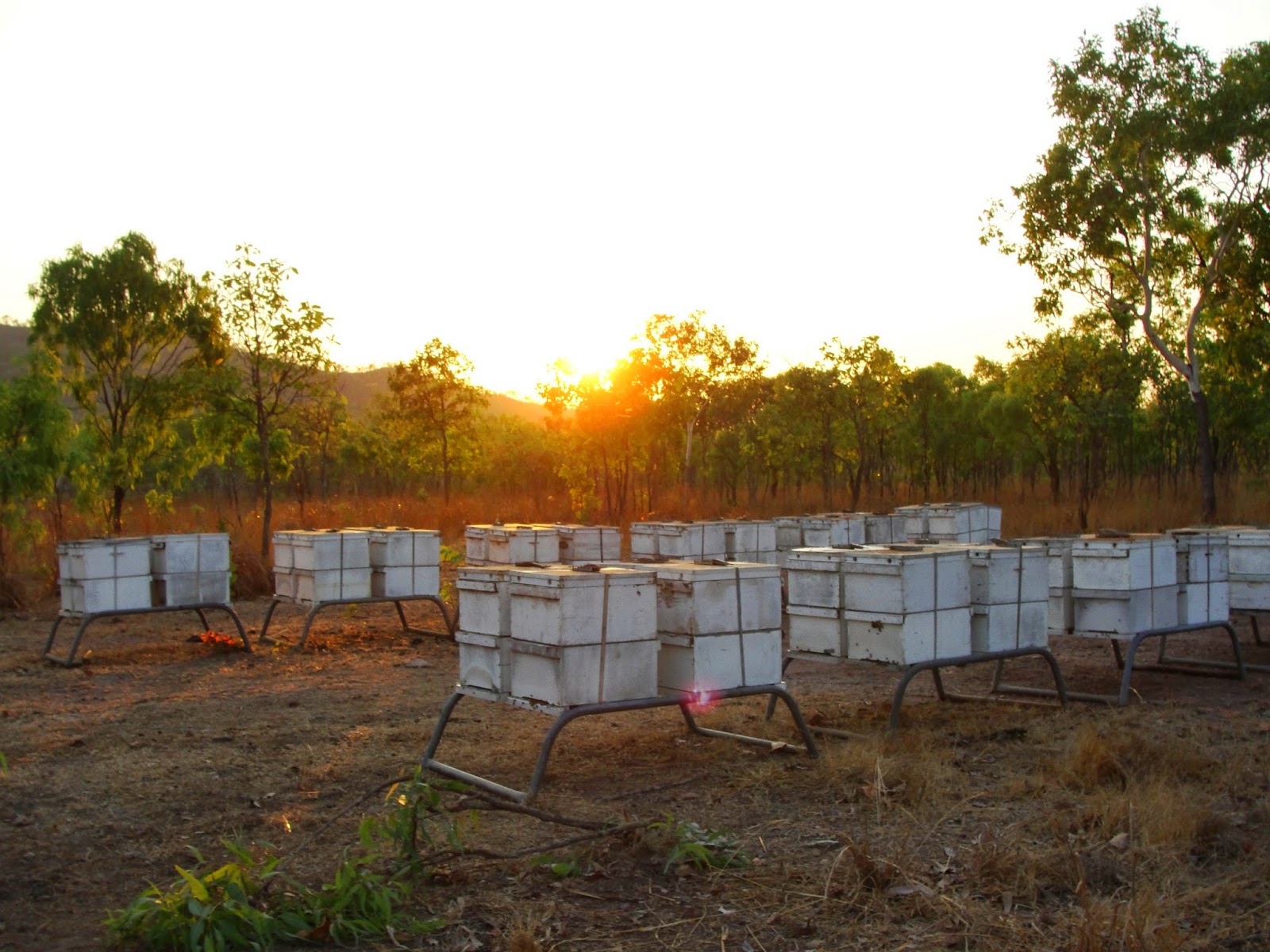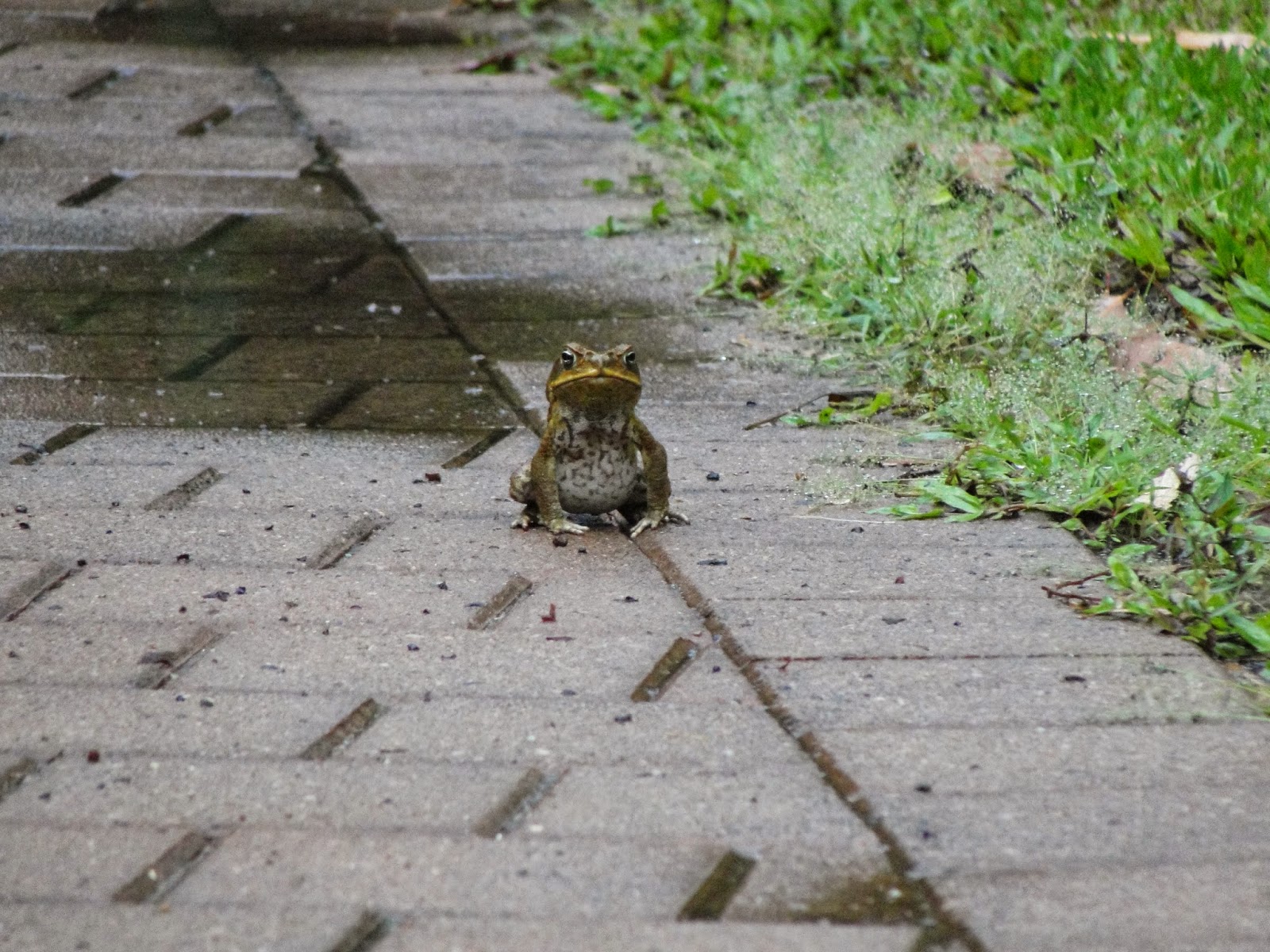buzzing around Just Another Weed Patch
After that I really wanted to learn more about the overall process and these fascinating little creatures. While we were in Perth I reached out to Tas and Leanne who had a beekeeper WWOOF listing near Darwin (another city accessible by our magical train pass).
I crossed my fingers and waited. After a few days I begrudgingly emailed a few other hosts in that area... And then I kinda stalked Tas and Leanne (hey, it worked on Patrick three years ago). Luckily for us they had space and agreed to host us for our short stay in Darwin.

we figured we were in for a fun week
as soon as we saw Tas's regular truck

(and then we saw his bee truck
and *knew* we would have a fun week)
Here are five cool things we got to do, in no particular order:
1. We helped Tas check the hives for honey. If the "super" box was nearing full, we put an empty "super" box between the top box (where the worker bees make honey) and the bottom box (where the queen and brood live).

before adding another super

smoke makes the bees go into the hive
so they don't sting you
(unless "you" are Patrick)

not quite ready
After about 48 hours we went back to collect the top "super" box full of honey so that it could be extracted (see #3).

(and then we watched a really nice sunset)
one of the many famous "big" things in Australia)

the sunrise, for one thing ...

... the happy bees, for another
The cattle farm was enormous and while we rode around checking on the other hives that were already there, Tas took us to some really pretty spots.

view of the valley from the farm house

termite hills - very "big" in Australia

four crocs and two wallabees - see them?

making sure we got his good side
And even a flat tire couldn't spoil the day.

(whereby Patrick asks Jen - for the 459th time since we arrived in Oz -
"have you SEEN Wolf Creek?")
Our WWOOF hosts always encourage us to explore tourist attractions and local hangouts during our stays. They don't realize that "work outings" like this day on the cattle farm are just as interesting to us.
3. We helped extract honey. Because of the volume of hives, Tas has had to upgrade from a small extractor that handled 4 frames at a time...

exhibit A

exhibit B
The machine is complex but the process is pretty simple.

the honeycombed frames are loaded into the "decapper" (my name for it)

the "decapper" slices the layer of wax over the combs

the frames are pushed through to the centrifuge and spun to remove honey

meanwhile the wax that was removed from the frames
is melted by steam pipes to extract even more honey

all the honey goes into a trough

bits of leftover wax are cleared from the trough to prevent clogging the pipes

the extracted honey goes into a tank for storage
(the tape lines are "before" and "after" this batch of extraction)
A few extra hands, a few tastes of honey for quality assurance purposes, and a few drinks made the process go pretty quickly!
4. We helped fill honey buckets and Patrick made a few sales.
all the honey that "accidentally" falls onto your fingers,
which you must then lick clean
5. We cleaned a lot of bee equipment. This work wasn't really photo-worthy, but the days were bloody hot and between jobs we enjoyed Tas and Leanne's lovely home and amenities.

WWOOFing is hard!

not a bad breakfast view

sometimes I call him Dairy Queen
As with all of our hosts, Tas and Leanne were really welcoming and we enjoyed lots of interesting and diverse conversations over delicious dinners. We didn't always agree but that's what made the talk so interesting. All in all, a great week.
With almost every WWOOF gig we've seen just a small piece of the process because things like growing vegetables and fermenting wine take longer than the time we've committed to helping our hosts. But with beekeeping we were able to see a lot of the process, and because the parts we saw were pretty straightforward we were able to actively participate, too.

safety first

check ya's, Bee Man!



i added "bee hives" to the long list of things that i wanted.... 30 years ago / =
ReplyDeleteNever say never!
Delete